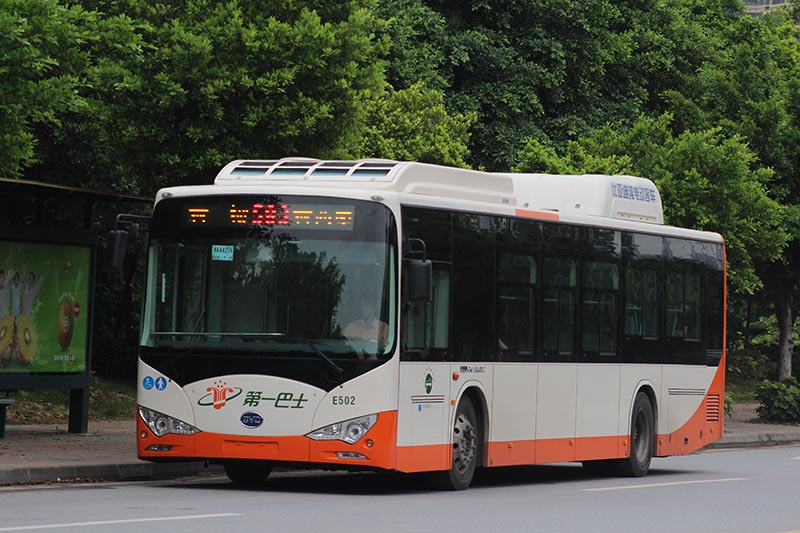
China heavy-duty vehicle market: Electrification is the key
Heavy duty is one of the more difficult transportation sectors to decarbonise. It is widely assumed that internal combustion engine (ICE) technology will continue to play a pivotal role in the sector moving forward. A recent report on China’s heavy-duty vehicle (HDV) market by the International Council on Clean Transportation (ICCT) indicated that while the development of clean diesel engine technologies should continue to be encouraged, the “bottom line” is it is necessary to electrify the fleet to significantly reduce greenhouse gas (GHG) emissions at an affordable cost.
China may have lost the mantle of the world’s most populous nation to India, according to demographic data from the United Nations Population Fund, however, it continues to be far and away the largest heavy-duty market. Over the decade to 2021, annual HDV sales in China have increased from 1.7 million to three million, with diesel models contributing 2.73 million units. Fossil fuel-powered vehicles accounted for 96% of sales in 2021 with electric and fuel cell vehicles providing 4%, driven by local policy efforts.
Rapid growth in heavy-duty vehicles has raised concerns about the impact on air quality and climate efforts. Heavy-duty trucks emitted 78.5% of road fleet nitrogen oxide (NOx) in China in 2020 and 90.6% of total vehicle particulate matter (PM) emissions. Large buses contributed a further 11.7% of NOx. Half of the transportation emissions across all vehicle types are from heavy-duty vehicles, and the sector generates 3% of GHG emissions from all industries in China. Reducing HDV emissions is a vital component of China’s goal to peak carbon dioxide (CO2) emissions by 2030 and achieve carbon neutrality in 2060.

The ICCT published its report on “The evolution of heavy-duty vehicles in China: A retrospective evaluation of CO2 and pollutant emissions from 2012 to 2021” in October 2022. The study examines the historical development of HDV CO2 and air pollutant emissions, emission-control technologies, and vehicle and fleet characteristics.
Straight trucks, dump trucks, tractor trailers, city buses and coaches sold from 2012 to 2021 with a gross vehicle weight (GVW) greater than 3.5 tonnes are covered in the research. New energy vehicles (NEV) are beyond the scope of the study. The research dates align with the implementation timeframe of China’s HDV fuel consumption standard.
The report outlined a variety of efforts to curb fuel consumption and emissions of pollutants including new legislation, the promotion of NEV, advanced engine technologies—such as high-pressure common rail injection, light-weighting materials, in-use vehicle and engine tests.
China began regulating vehicle pollutants after the China I Vehicle Emissions Standard was introduced in 2000. Historically, the Asian nation has followed Europe’s lead on emissions. The latest standard, China VI, was finalised in 2018, bringing significant changes to testing schemes and methods. China VI-a (Phase I) applied to all new HDVs in July 2021. Phase II is mandated for new HDVs from July 2023 and incorporates anti-tampering monitoring and remote onboard diagnostics data reporting that will enhance real-world emissions compliance.
While NOx emissions requirements have become increasingly stringent over the past decade with China’s emissions standards, there has not been a corresponding decrease in CO2 emissions with each update of the NOx emissions requirements, says the ICCT. And despite increasingly stringent fuel consumption standards, limited improvement (~2%) in fleet-level CO2 emissions was observed in 2021 relative to 2013.
Stage 1 of China’s fuel consumption standards was introduced in 2012, with the initial objective of reducing the nation’s dependence on crude oil imports. Fuel consumption requirements are defined by segments and weight classes. Two further amendments, Stages 2 and 3, have adjusted the upper limit of fuel consumption for HDVs, the most recent in 2018.

China’s government published an amendment to the heavy-duty vehicle fuel consumption standard in June 2022, for public comment. Stage 4 proposes new limits on the fuel efficiency of new straight trucks, dump trucks, tractor-trailers, coaches, and city buses with a targeted tightening of around 15% across all vehicle segments. The new standard is expected to take effect on January 1, 2025, for new type-approvals and on July 1, 2026, for all new heavy-duty vehicles.
A new driving cycle, China Heavy-Duty Commercial Vehicle Test Cycle (CHTC), is included in the legislation and the conversion rate of CO2 emissions will be harmonised at 2,600 g/L for diesel and 2,370 g/L for gasoline, says the ICCT. However, in a briefing on January 3, 2023, the ICCT recommended a standard that is 20% more stringent than Stage 3, which it says is both achievable and more aligned with the region’s climate goals.
The ICCT report also recommended the inclusion of utility vehicles in China’s fuel consumption standards. The vehicle type is not currently legislated and accounted for 10% of the total market share in 2021. A vagueness in the boundary between utility vehicles and other segments is apparent in the current legislation.
Despite increasing rigour around fuel standards, China does not yet control CO2 emissions at the engine or vehicle level. CO2 emissions are regulated indirectly through fuel consumption standards meaning there is no “direct, enforceable regulation for curbing GHG emissions from HDVs,” according to the ICCT.
The report calls for a switch from the current fuel consumption standard to the regulation of GHG emissions which would provide a “more inclusive and integrated emission control regulation for both pollutant and GHG emissions.” It would also allow the industry to balance control of pollutants more effectively, the ICCT said.
Development of clean diesel engine technologies will make the transition to full electrification smoother and more affordable, the ICCT said. Nevertheless, the ultimate goal is electrification, and the report calls for the introduction of a dual-credit policy in upcoming credit policies for HDV—similar to what was employed to promote the production of electric passenger vehicles.
Emissions performance of individual vehicle segments was outlined in the ICCT report. In 2012, 44% of trucks carried no after-treatment technology on board. However, since the introduction of China IV in 2012, this technology has become indispensable for new models. The report noted that the combination of exhaust gas recirculation (EGR), selective catalytic reduction (SCR), diesel oxidation catalyst (DOC), ammonia slip catalyst (ASC) and diesel particulate filter (DPF) accounted for 48% of the market in 2020. Still, manufacturers are facing growing pressure to cut heavy-duty emissions. The ICCT outlined a need for OEMs to develop cheaper and more efficient technologies to adapt to tightening regulations.
An 85% drop in sales of diesel-powered city buses with a GVW of between 5.5 and 7 tonnes has occurred as China strives to electrify city bus fleets. Diesel-powered city buses are facing more stringent limits on fuel consumption. Since July 2021, 100% of models met Stage 3 fuel consumption standards, according to ICCT data.
Stage 2 standards had a limited impact on fuel efficiency improvements for coaches. A 15% decline in CO2 emissions was observed over the past three years due to the Stage 3 standard. However, around 20% of coaches sold during Stages 2 and 3 were above fuel consumption limits. The ICCT analysis indicates that these may be existing models that were type approved in the previous stage that continue to be sold.
Despite the arrival of Stage 3, and more stringent limits of 41L/100km (1,066 gCO2/km) for dump trucks, the ICCT outlined few improvements in fuel consumption. Dump trucks sold after July 2021 failed to meet the new standard, due in part to a temporary postponement of the new regulation for months.
Medium- and heavy-straight trucks saw very limited improvement in 2021 relative to 2012. CO2 emissions of medium straight trucks declined by approximately 10%, but heavy-straight trucks saw little progress over the entire period. The lack of improvement suggests a need for greater enforcement of fuel efficiency standards for straight trucks.
Tractor trailers significantly lagged the regulated value set by Stage 3 with around half sold in the second half of 2021 still exceeding the required limits. Although, an average emission improvement of 10% was still evident compared to the first half of 2021. Full implementation of the Stage 3 standard for tractor-trailers was postponed for months, says the ICCT.
On February 14, 2023, the European Commission published a proposal for new heavy-duty CO2 standards for trucks, trailers and buses. The proposal calls for a 100% zero-emission target for city buses for 2030 and a 90% CO2 reduction target for trucks by 2040.







